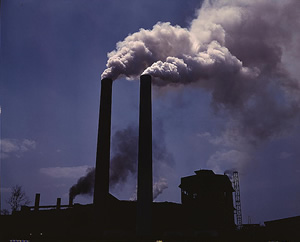- 324 reads

The world of science just got a little wackier. That’s because a team of scientists at the Pennsylvania State University have discovered a new way to turn Carbon Dioxide (CO2) into Methane, or the gas the comprises a human being’s flatulence, or farts. Despite the fact that this study seems to have been requested at the behest of a third grader, the discovery could be a major boon to intermittent alternative fuel sources, such as Wind or Solar.
The way this “fart-machine” works, is by sending an electric charge into a single-celled microorganism called an archea. The charged archea takes in the CO2 and converts it into methane. Like Carbon Dioxide, Methane is also a potent Greenhouse Gas, however the process by which it removes CO2 from the air allows it to power fuel cells or simply store the electrical energy chemically. The archea that are able to produce methane are called methanogens, and are found in nature in the assisting of termites for digesting wood pulp, as well as on the microorganic scale where they are vital in the process of decomposing organic matter.
Archea are able to retain 80% of the energy delivered to it, which is a relatively small loss compared to solar units themselves. This energy loss may seem unnecessary, as one would imagine electrical energy can be directed right into a battery. However, the reason scientists are spending their time attempting to turn one energy source into another is that no battery really exists, for anywhere near a reasonable price, to house all the energy that is produced by solar arrays or wind turbines. Fuel cells, like ones made up of archea, are much easier and cost-effective to house such large quantities of electricity.
The team that made this discovery, led by Bruce Logan, is now being challenged by another member of the field, Bruce Rittmann. Rittman’s incredulity is based on the fact that the process by which methanogens produce methane and reduce CO2 is “suspiciously simple.” Only time and subsequent experimentations will show whether we can “fart” our way to sustainability.

